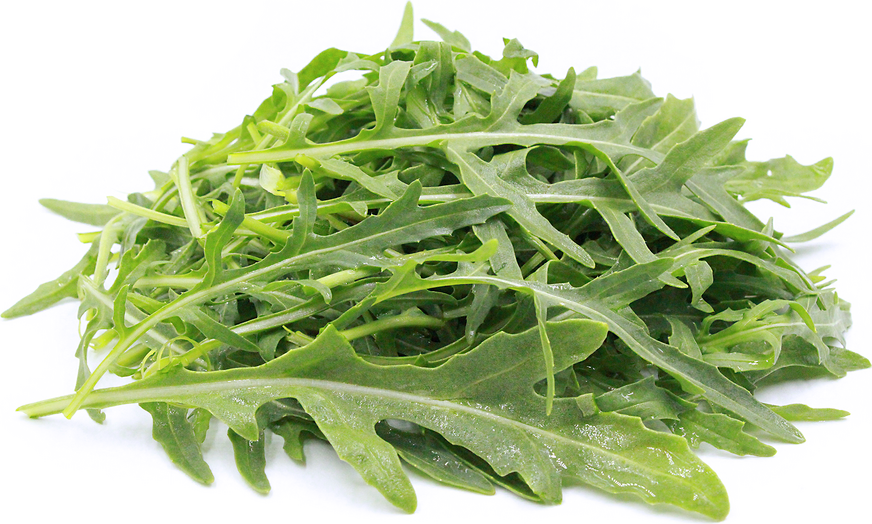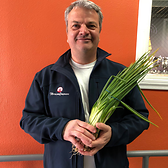


Wild Surrey Arugula
Inventory, bunch : 0
Description/Taste
Surrey arugula grows upright in bunches and has thin, short stems and long deeply lobed leaves with jagged and rounded edges. The dark green leaves are a mix of both broad and slender leaf forms with wider leaf margins along the central ribs. They grow up to 20 centimeters tall and are often harvested between 5 and 10 centimeters. Surrey arugula is milder than its wild arugula parent and offers a bitter, peppery flavor with mustard-like nuances.
Seasons/Availability
Surrey arugula is available in the spring and summer months.
Current Facts
Surrey arugula is a cross between a salad arugula cultivar and wild arugula, taking the best from both and offering a quick growing plant with increased disease resistance. It is botanically classified as Eruca sativa spp. diplotaxis and is one of over 20 different named arugula cultivars. Surrey arugula is primarily sold through nurseries and is popular with home gardeners.
Nutritional Value
Surrey arugula is an excellent source of vitamin K and vitamin A and a good source of vitamin C, folate, calcium, manganese, magnesium and potassium. The bitter, peppery herb is also a source of essential B-complex vitamins, phosphorus, copper, zinc, choline and vitamin E. Surrey arugula also contains protein, Omega-3 and Omega-6 fatty acids.
Applications
Surrey arugula is used as an herb or a salad green. It can be wilted, cooked or eaten raw. Add Surrey arugula leaves to hot, cooked pasta, and toss until wilted. The peppery green is combined with other leafy greens for salads and pairs well with almonds, berries, stone fruit, creamy cheeses, gamey meats, and balsamic. Substitute Surrey arugula for basil in pesto and other sauces or use in place of spinach on pizzas, sandwiches or in egg dishes. Keep Surrey arugula dry and wrapped loosely in the refrigerator for up to a week.
Ethnic/Cultural Info
Surrey arugula is one of several improved cultivars that combine the hardiness of cultivated arugula, Eruca sativa, with the intense flavor and nutritional properties of the wild variety, Diplotaxis tenuifolia. Both species are commonly referred to as “salad rocket” or “rocket salad,” the biggest difference between the two species being leaf appearance and phytochemical compounds.
Geography/History
Arugula is native to the Mediterranean region, including Southern Europe, Italy, Turkey and northern Africa. It was brought to North America sometime during the 19th century where it has been naturalized. Most variations on the name for arugula can be traced back to the Latin word eruca, which means a certain type of cabbage. Italians immigrating to America brought rucola as a culinary herb and the term was Americanized as ‘arugula’. Surrey arugula is fast growing and tolerates both cool and warmer conditions making it appealing to the home grower and small farmer and may be spotted at farmer’s markets or in community supported agriculture boxes.








